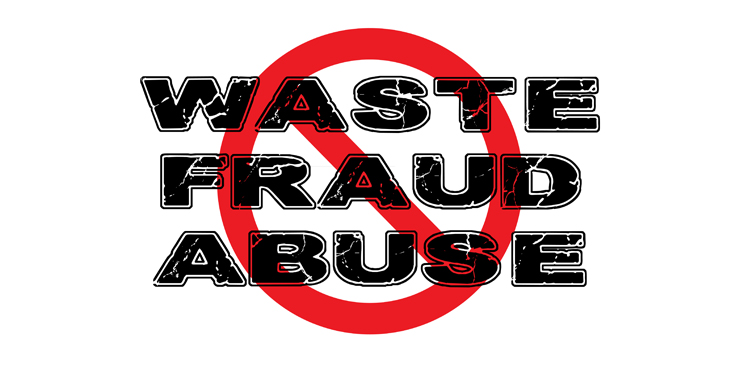Trends in combatting abuse and fraud in Workers’ Compensation

Fraud or abuse that might not reach the legal requirements for criminal sanctions happens in all aspects of the Workers’ Comp system. There’s employee fraud, employer fraud, health provider fraud, attorney fraud, and even insurer and claims adjuster fraud. The good news is that technology is making it easier to detect and many states have strengthened their laws to prevent fraud. In this article, we’ll look at employee fraud and health provider fraud.
Employee fraud
It’s important to recognize that only 1 – 2% of employee injuries are considered fraudulent and that injured employees can be scared and overwhelmed by the system and need the support and guidance of the employer to navigate to a quick recovery. But when fraud or abuse occurs it can be hard to detect and lead to unnecessary costs.
The most common types of employee fraud are faking injury claims, exaggerating injury or illness, claims for injuries incurred outside of work, failing to report earned wages while receiving temporary disability benefits, and prescription fraud, especially related to opioids. Malingering can also complicate an already complex claim and postemployment claims such as those involving cumulative trauma (CT) can be difficult for the employer to control.
Two recent phenomenon driving employees to cheat the system are expensive health care and long-term unemployment. While the evidence is anecdotal, high deductible health insurance plans, the ever-increasing costs of co-pays, and the growing uncertainty of coverage can incentivize the use of workers’ comp. In most cases, workers will have all medical costs covered and receive indemnity payments. Despite continued job growth and low unemployment, long-term unemployment persists among certain workers, and those having a tough time finding jobs that match their skill set or pay well may look to postemployment comp claims for much needed income.
There are many “red flags” (.pdf) that can help employers identify questionable claims and these should immediately be shared with the claims adjuster. However, proving that an injured worker is engaged in personal physical activities inconsistent with the alleged disability can be difficult. Today, a combination of the traditional approaches to fraud detection and technology make it easier and more affordable.
Here are eight things that employers can do:
- Have the injured worker put in writing the facts of the injury.
- Do a thorough investigation of the incident, including interviewing witnesses, taking pictures, documenting PPE in use, and so on.
- Make your employees comfortable with reporting suspected fraud and train supervisors in monitoring “workplace chatter.” Often, co-workers may have information or a sense that a co-worker is abusing the system.
- Use surveillance cameras in offices, parking lots, warehouses, etc. According to an Employers Holdings, Inc. survey, 24% of small businesses have installed surveillance cameras on their property. There was a widely publicized YouTube video of a Florida woman hitting herself on the head with a sprinkler head that had fallen on her desk and then claiming a workplace injury.
- Have a relationship with a trusted, competent occupational physician who understands your business and can foster the confidence of employees. This partnership will help identify possible fraudulent cases and control prescription abuse. Prescription fraud is easily mitigated by a doctor’s ability to check a prescription-monitoring data base, which 49 states now have in place.
- Monitor social media. It’s positively amazing what people will post on social media. If fraud is suspected, investigators can use software to search upwards of 200 social media sites. Employers need to be cautious about how they employ social media tools to investigate their employees’ behaviors and be sure that the evidence is admissible in court. While social media has been allowed in some court cases, this area of law is still in its infancy. Even if the admissibility of social media is questionable, it provides an indication that video surveillance, which is more likely to be admissible because it includes a time stamp, is warranted.
- Consider smart device data. In recent cases, police obtained a search warrant for the data from the cardiac pacing device in an arson investigation, a fitness tracker was used to discredit an alleged assault, and an Amazon Echo was accessed (unsuccessfully) as a witness to a murder. This area of law is largely untested, but should not be overlooked.
- Check job applicants carefully. Criminal backgrounds and a history of suspicious injury claims can be good predictors of potential fraud.
Physician fraud
For the dishonest physician, workers’ comp is fertile ground. Common examples of fraud include: submitting claims for services not provided, duplicate billing, upcoding or submitting claims for services with higher rates, unbundling or submitting claims for several services that should have been one claim, ordering excessive treatment or supplies, dispensing drugs for personal gain, receiving kickbacks in exchange for directing patients to other service providers, and operating “medical mills” with others who lack required credentials.
Some states such as California have enacted laws to aggressively pursue fraud. Since A.B. 1244, which requires the division’s administrative director to suspend any medical provider, physician or practitioner from participating in the workers’ comp system in cases that involve criminal activity or inability to perform duties safely, among other requirements went into effect Jan. 1, 2017, over 170 providers have been suspended.
To combat physician fraud, employers can:
- Have a relationship with trusted, competent occupational physicians who understand your business and can develop confident relationships with your employees.
- Vet independent medical reviews for quality. Complex claims that involve comorbidities can be feeding ground for exaggeration and malingering and often involve legal representation. According to a recent white paper by the Risk & Insurance Management Society Inc. a quality independent medical examine (IME) can help mitigate losses. It’s important to hold an IME to a high standard.
- Report the suspected fraud.
DISCOVER SEVEN SECRETS THAT COST YOU PLENTY
Overcharges are rampant in workers’ compensation. Find out why!
[contact-form-7 id="1357" title="INNER WORKCOMP ADVISORY SIGN-UP"]